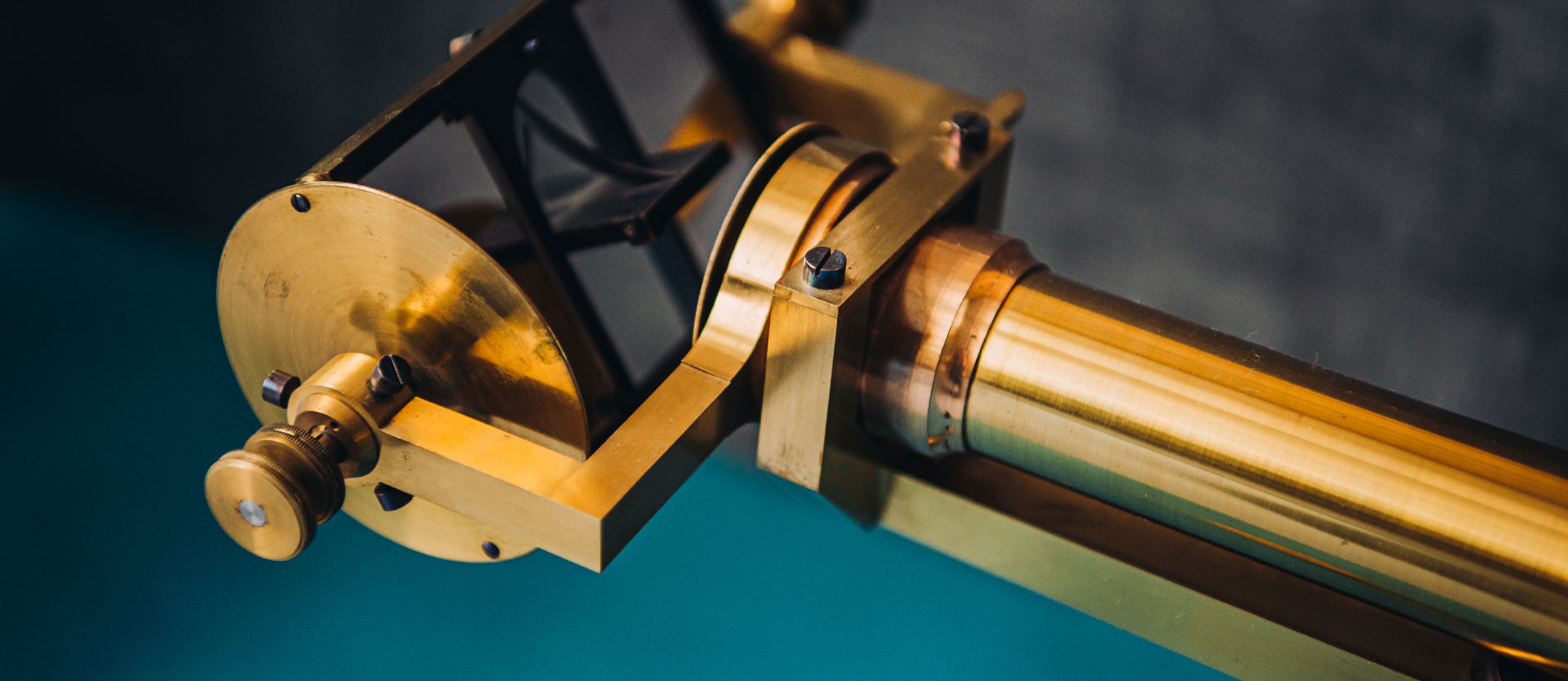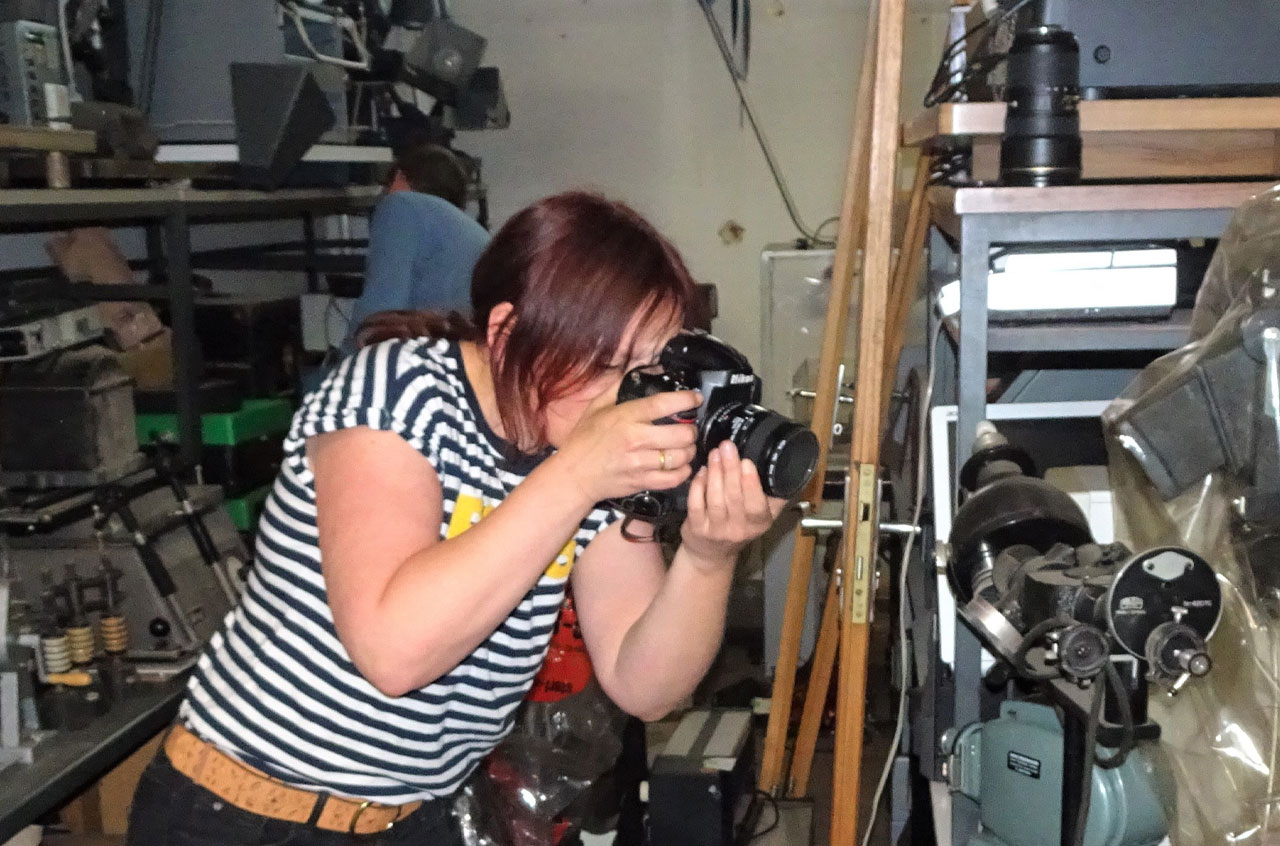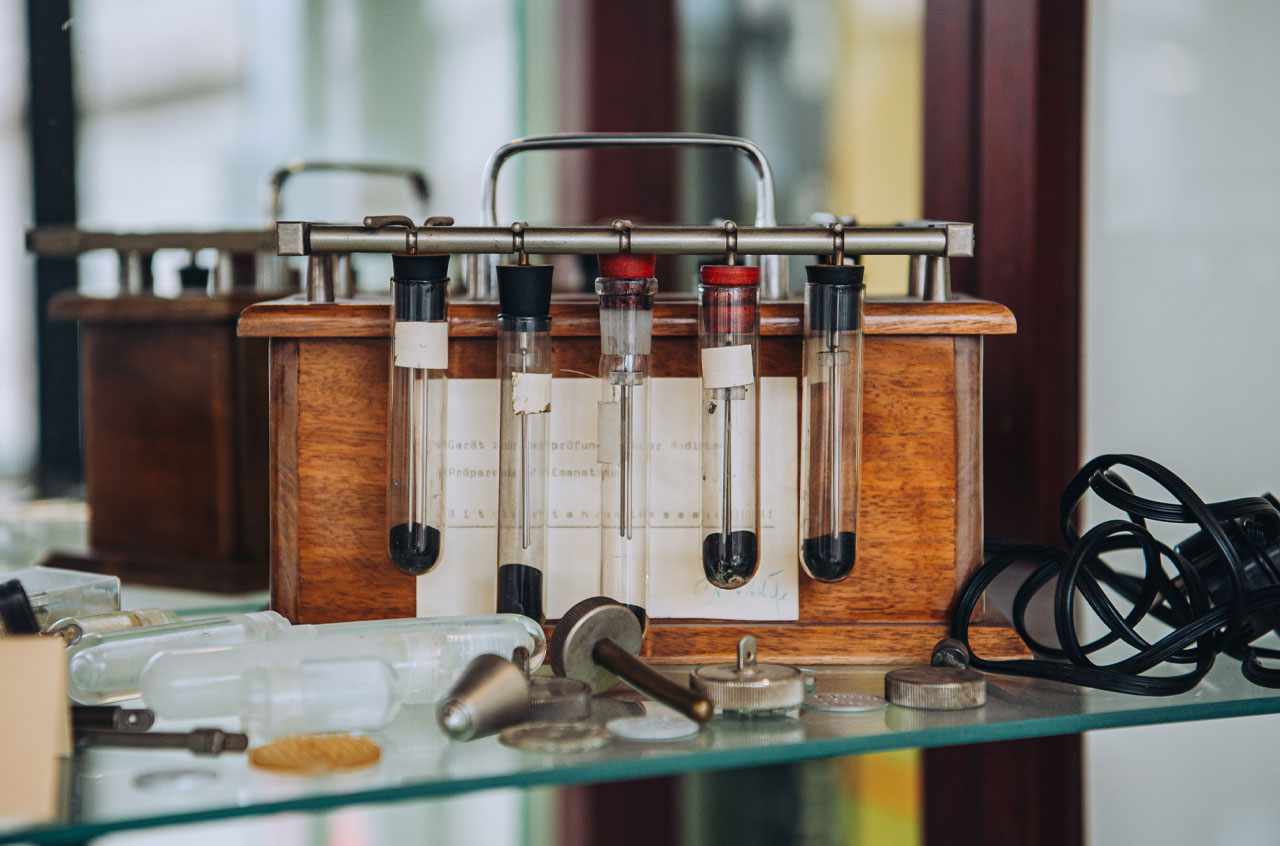
"The totality of the collection impressed me"

Illustrating the illustrated book for JLU was certainly not an everyday job. What was the special attraction of the project and how did you approach it?
The special attraction lay particularly in the immense variety and special nature of the exhibits that I photographed. In addition, there was the possibility of depicting things in a factually correct way on the one hand, but also implementing a more artistically oriented approach on the other. Here, my focus was on trying out special angles and arrangements in order to capture the wholeness of the individual collections and to stage them in an exciting way, even for viewers not familiar with the subject.

Photographer Katrin Friese at work for the illustrated book "Sachverstand" about the more than 50 collections of Justus Liebig University (JLU) Giessen.
And what were the photographic challenges?
I primarily photographed with "available light. There were always challenges in giving the exhibits sufficient radiance. Especially when they had to stay in their showcase for protection reasons or simply couldn't be moved due to size, shape or setting. However, since I normally work more in the event and conference area, I once really enjoyed the fact that my models could not run away from me, but dutifully "sat" on their stands and holders.

Katrin Friese captures all kinds of curiosities from times past in the archives of the collections.
Which collection pieces did you particularly like?
I can't name any individual piece here, because I was very impressed by the collections as a whole. Many pieces tell stories of times long past and it is these stories that have particularly delighted and inspired me.
What equipment did you use to take photographs?
I shot with a Nikon Z4s and a Nikon Z6//. It was great to find some manual Nikon lenses in the collection of material, which I then in turn used to photograph some of the collection of material. Some macro shots were also taken with a Fuji XT-3.
Is there a motif that has remained particularly in your memory?
Above all, the exhibits of the pathology of veterinary medicine. They were really very impressive!
Original publication:
Alissa Theiß, Michael Lierz (Hg.) SACHVERSTAND – Die Sammlungen der Justus-Liebig-Universität Gießen, 200 Seiten, über 140 Abbildungen, 25 Euro
ISBN 978-3-944682-98-3
Further information: www.uni-giessen.de/sammlungen












